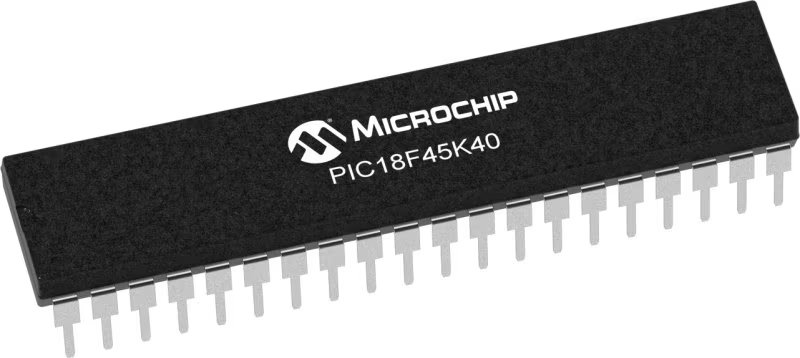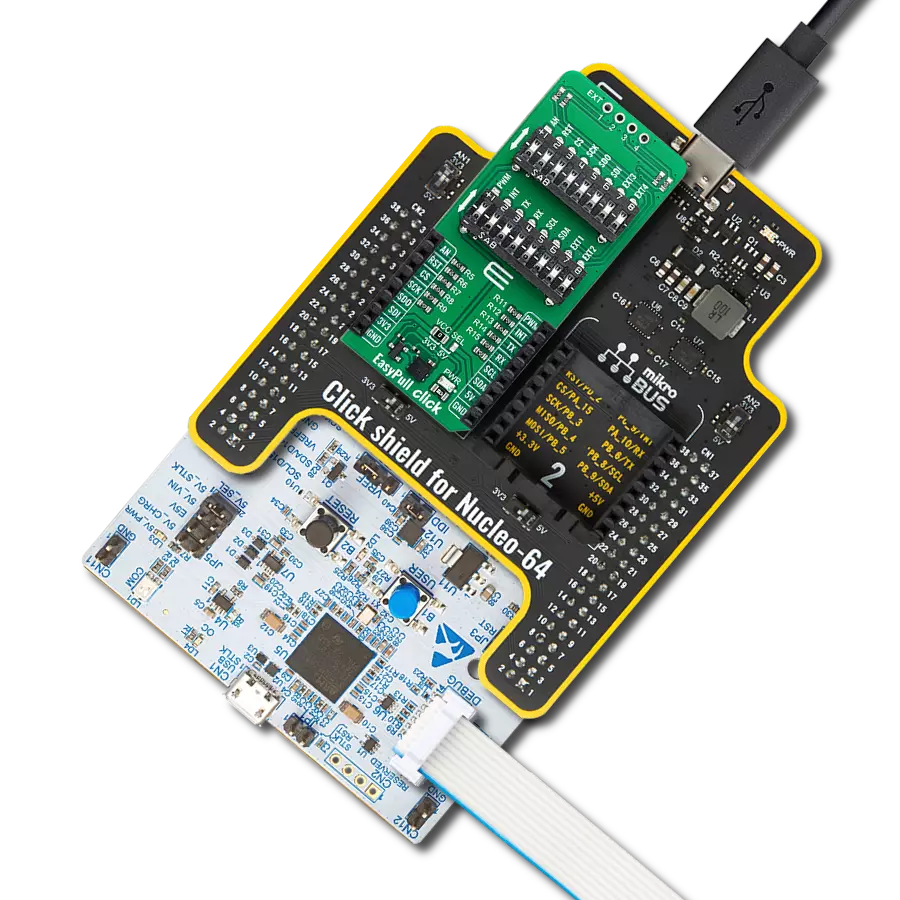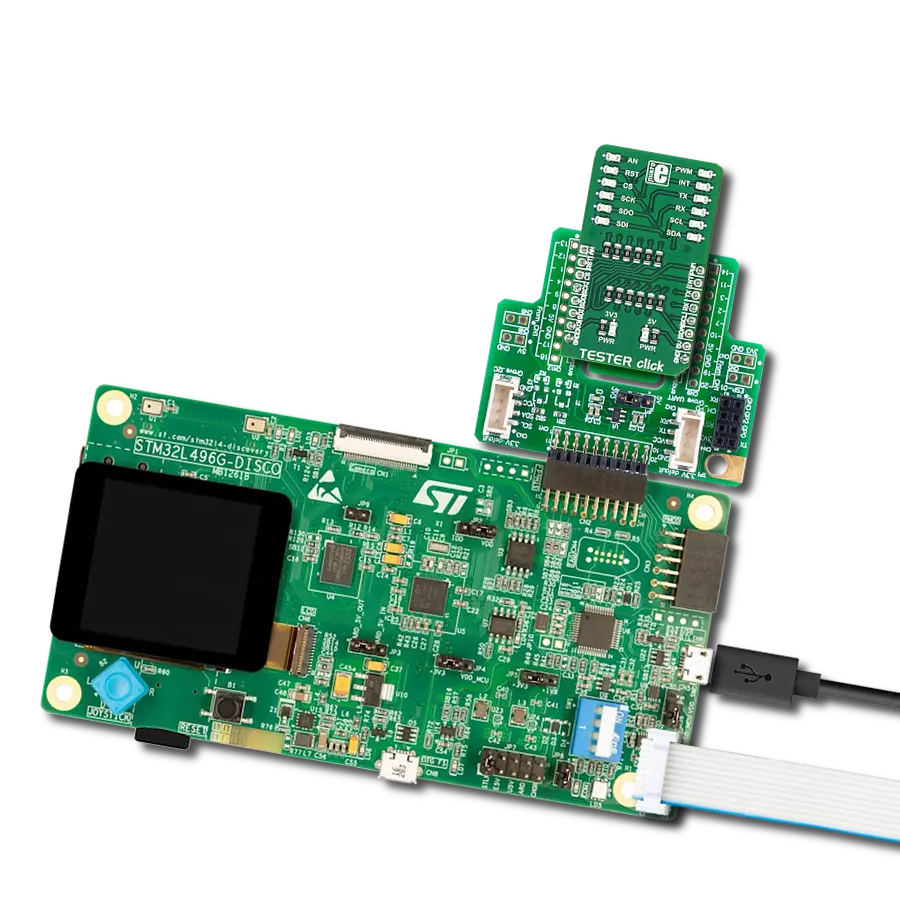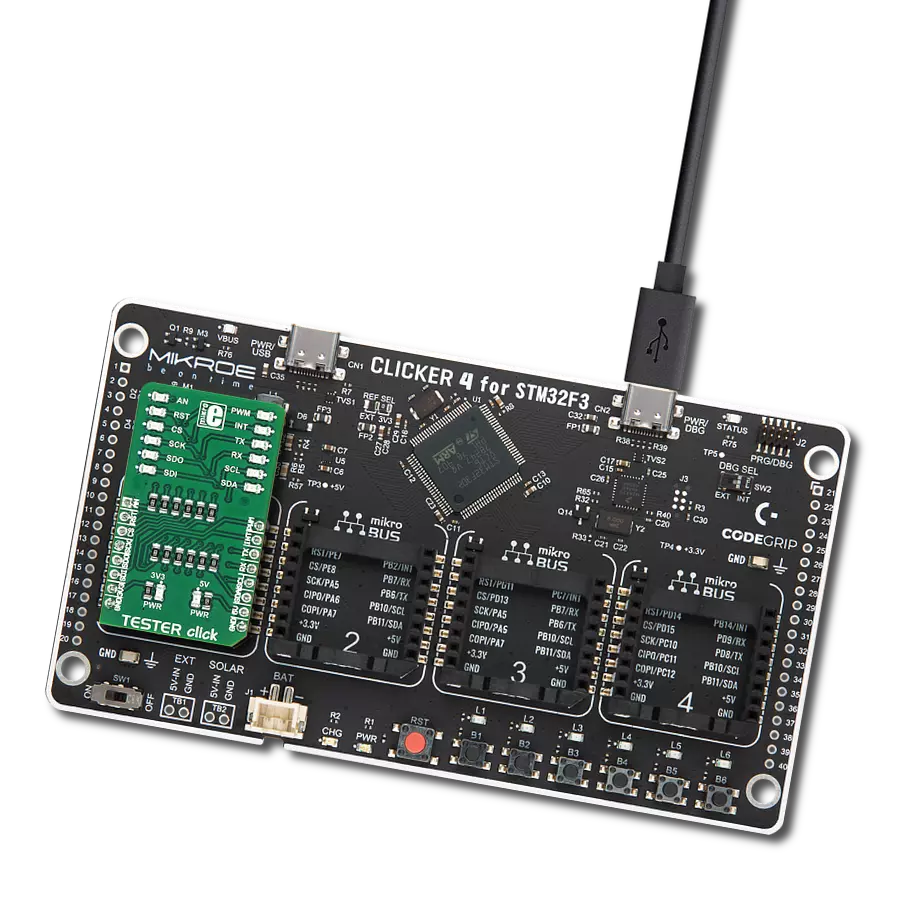Track mikroBUS™ pin logic levels in real time with visual feedback, perfect for debugging and troubleshooting embedded systems
A
A
Hardware Overview
How does it work?
Tester 2 Click is a diagnostic Click board™ designed to provide immediate and reliable visual feedback on the logic levels of mikroBUS™ pins. It features a 2x6 array of orange LEDs, each connected to a specific mikroBUS™ pin, allowing developers to instantly determine whether the logic state on a pin is HIGH or LOW. For easy identification, each LED is clearly labeled with the name of the corresponding pin, such as PWM or AN. Additionally, the board includes two LEDs dedicated to monitoring the mikroBUS™ power rails, signaling the presence of +3.3V and +5V voltages. This functionality eliminates the need for additional diagnostic tools or complex measurement setups, saving developers valuable time and effort during debugging and troubleshooting. Using Tester 2 Click is straightforward. Once the board is inserted into the mikroBUS™ socket, it becomes fully operational without requiring additional configuration or setup. The power indication LEDs immediately signal the
presence of voltage on the mikroBUS™ power rails, while the rest of the LED array lights up based on the logic states of their respective pins. The simplicity of the design, which uses LEDs and SI2310 N-channel MOSFETs for controlling their operation, ensures reliability and ease of use, making it an indispensable tool for developers working with mikroBUS™ systems. The board is built to be fully compatible with the standardized mikroBUS™ connector, a key feature of MIKROE development systems. This connector ensures that all commonly used interfaces, including SPI, I2C, UART, PWM, analog input (AN), and various GPIO pins such as CS, INT, and RST, are consistently mapped across all platforms equipped with mikroBUS™ sockets. It also incorporates two power supply rails, +3.3V, and +5V, allowing compatibility between different systems and a wide range of Click boards™. This standardization means that Tester 2 Click can be used across various platforms without requiring hardware
modifications, ensuring flexibility and ease of integration for developers. A notable addition to this board is a switch that activates the ClickID feature, allowing the signal from ClickID to be used on the CS pin instead of the standard SPI Chip Select functionality. Additionally, the board includes LP CUT traces on its backside, which are designed to support low-power operation. By severing these traces, the power supply to the LEDs and the ClickID section is disconnected, drastically reducing power consumption and enabling efficient operation, especially in applications where energy efficiency is critical. This Click board™ can operate with either 3.3V or 5V logic voltage levels selected via the VCC SEL jumper. This way, both 3.3V and 5V capable MCUs can use the communication lines properly. Also, this Click board™ comes equipped with a library containing easy-to-use functions and an example code that can be used as a reference for further development.
Features overview
Development board
EasyPIC v8 is a development board specially designed for the needs of rapid development of embedded applications. It supports many high pin count 8-bit PIC microcontrollers from Microchip, regardless of their number of pins, and a broad set of unique functions, such as the first-ever embedded debugger/programmer. The development board is well organized and designed so that the end-user has all the necessary elements, such as switches, buttons, indicators, connectors, and others, in one place. Thanks to innovative manufacturing technology, EasyPIC v8 provides a fluid and immersive working experience, allowing access anywhere and under any
circumstances at any time. Each part of the EasyPIC v8 development board contains the components necessary for the most efficient operation of the same board. In addition to the advanced integrated CODEGRIP programmer/debugger module, which offers many valuable programming/debugging options and seamless integration with the Mikroe software environment, the board also includes a clean and regulated power supply module for the development board. It can use a wide range of external power sources, including a battery, an external 12V power supply, and a power source via the USB Type-C (USB-C) connector.
Communication options such as USB-UART, USB DEVICE, and CAN are also included, including the well-established mikroBUS™ standard, two display options (graphical and character-based LCD), and several different DIP sockets. These sockets cover a wide range of 8-bit PIC MCUs, from the smallest PIC MCU devices with only eight up to forty pins. EasyPIC v8 is an integral part of the Mikroe ecosystem for rapid development. Natively supported by Mikroe software tools, it covers many aspects of prototyping and development thanks to a considerable number of different Click boards™ (over a thousand boards), the number of which is growing every day.
Microcontroller Overview
MCU Card / MCU

Architecture
PIC
MCU Memory (KB)
32
Silicon Vendor
Microchip
Pin count
40
RAM (Bytes)
2048
Used MCU Pins
mikroBUS™ mapper
Take a closer look
Click board™ Schematic

Step by step
Project assembly
Software Support
Library Description
Tester 2 Click demo application is developed using the NECTO Studio, ensuring compatibility with mikroSDK's open-source libraries and tools. Designed for plug-and-play implementation and testing, the demo is fully compatible with all development, starter, and mikromedia boards featuring a mikroBUS™ socket.
Example Description
This example demonstrates the use of Tester 2 Click board by controlling all LEDs on the Click board together and in sequential pin toggling with different delays.
Key functions:
tester2_cfg_setup- Config Object Initialization function.tester2_init- Initialization function.tester2_toggle_all- This function toggles all mikroBUS pins together a desired number of times with the selected delay between each toggle.tester2_toggle_seq- This function toggles all mikroBUS pins one by one with the selected delay between each toggle.
Application Init
Initializes the driver and logger.
Application Task
Toggles all pins together 5 times with a 500ms delay between each toggle, then toggles each pin sequentially with a 300ms delay between toggling each pin.
Open Source
Code example
The complete application code and a ready-to-use project are available through the NECTO Studio Package Manager for direct installation in the NECTO Studio. The application code can also be found on the MIKROE GitHub account.
/*!
* @file main.c
* @brief Tester 2 Click Example.
*
* # Description
* This example demonstrates the use of Tester 2 Click board by controlling all
* LEDs on the Click board together and in sequential pin toggling with different delays.
*
* The demo application is composed of two sections :
*
* ## Application Init
* Initializes the driver and logger.
*
* ## Application Task
* Toggles all pins together 5 times with a 500ms delay between each toggle, then toggles
* each pin sequentially with a 300ms delay between toggling each pin.
*
* @author Stefan Filipovic
*
*/
#include "board.h"
#include "log.h"
#include "tester2.h"
static tester2_t tester2; /**< Tester 2 Click driver object. */
static log_t logger; /**< Logger object. */
void application_init ( void )
{
log_cfg_t log_cfg; /**< Logger config object. */
tester2_cfg_t tester2_cfg; /**< Click config object. */
/**
* Logger initialization.
* Default baud rate: 115200
* Default log level: LOG_LEVEL_DEBUG
* @note If USB_UART_RX and USB_UART_TX
* are defined as HAL_PIN_NC, you will
* need to define them manually for log to work.
* See @b LOG_MAP_USB_UART macro definition for detailed explanation.
*/
LOG_MAP_USB_UART( log_cfg );
log_init( &logger, &log_cfg );
log_info( &logger, " Application Init " );
// Click initialization.
tester2_cfg_setup( &tester2_cfg );
TESTER2_MAP_MIKROBUS( tester2_cfg, MIKROBUS_1 );
if ( DIGITAL_OUT_UNSUPPORTED_PIN == tester2_init( &tester2, &tester2_cfg ) )
{
log_error( &logger, " Communication init." );
for ( ; ; );
}
log_info( &logger, " Application Task " );
}
void application_task ( void )
{
log_printf( &logger, " Toggling all pins together 5 times with 500ms delay\r\n\n" );
tester2_toggle_all ( &tester2, 5, 500 );
log_printf( &logger, " Toggling all pins sequentially with 300ms delay\r\n\n" );
tester2_toggle_seq ( &tester2, 300 );
}
int main ( void )
{
/* Do not remove this line or clock might not be set correctly. */
#ifdef PREINIT_SUPPORTED
preinit();
#endif
application_init( );
for ( ; ; )
{
application_task( );
}
return 0;
}
// ------------------------------------------------------------------------ END
Additional Support
Resources
Category:Proto

































